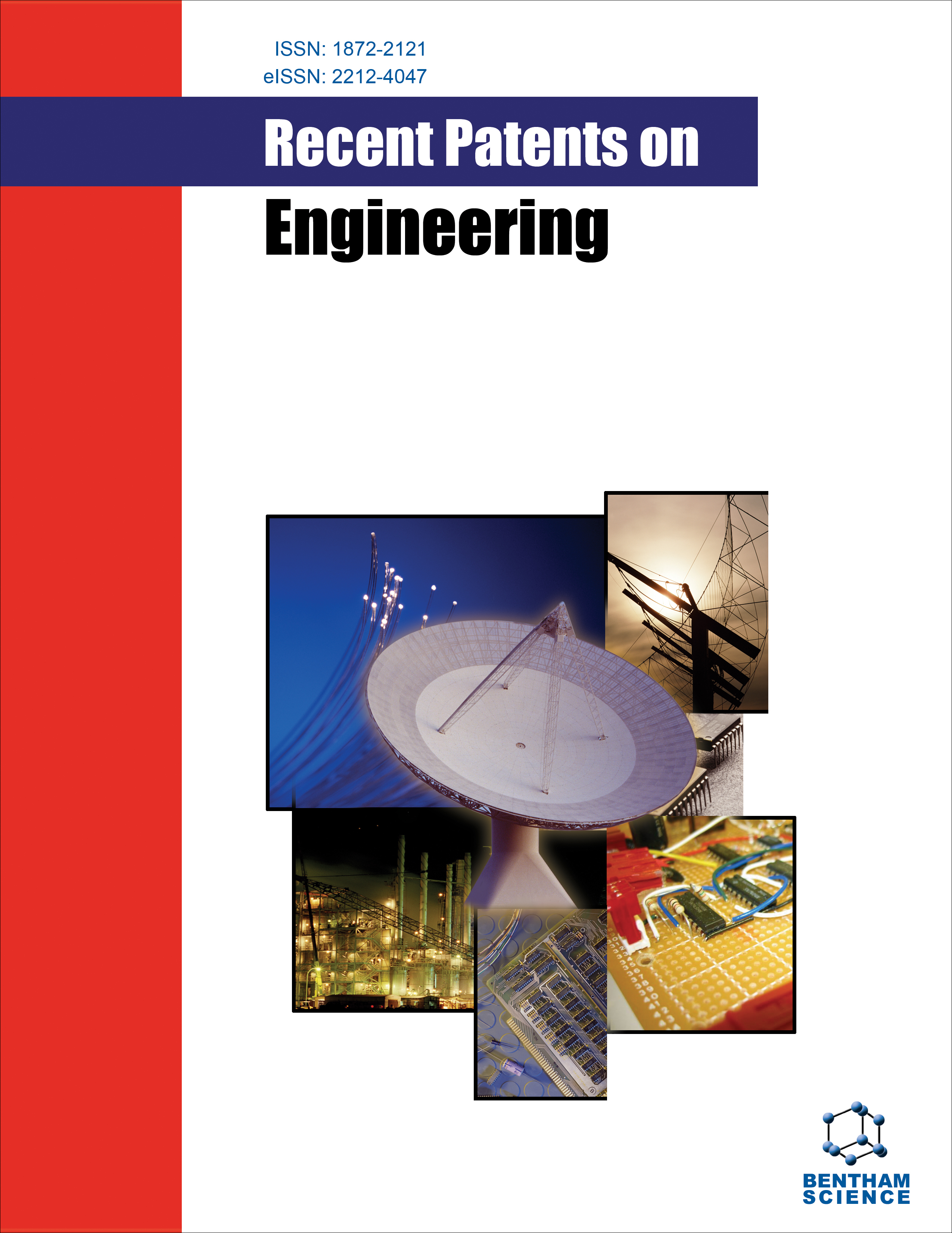- Home
- A-Z Publications
- Recent Patents on Engineering
- Previous Issues
- Volume 16, Issue 5, 2022
Recent Patents on Engineering - Volume 16, Issue 5, 2022
Volume 16, Issue 5, 2022
-
-
Computational Topology and its Applications in Geometric Design
More LessAuthors: Zhetong Dong, Hongwei Lin and Jinhao ChenBackground: In recent geometric design, many effective toolkits for geometric modeling and optimization have been proposed and applied in practical cases, while effective and efficient designing of shapes that have desirable topological properties remains to be a challenge. The development of computational topology, especially persistent homology, permits convenient usage of topological invariants in shape an Read More
-
-
-
3D Shape Segmentation: A Review
More LessAuthors: Rui Li and Qingjin PengBackground: Shape segmentation is commonly required in many engineering fields to separate a 3D shape into pieces for some specific applications. Although there are different methods proposed to segment the 3D shape, there is a lack of analyses of their efficiency and accuracy. It is a challenge to select an effective method to meet a particular requirement of the shape segmentation. Objective: This paper reviews Read More
-
-
-
Geometric Analysis of 3D Facial Image Data: A Survey
More LessAuthors: Hao Wang and Shiaofen FangBackground: 3D facial image data has become an important data source in many biometric computing applications due to the increasing availability of 3D surface image collection technologies. Objective: In this survey paper, we aim to review recent advances in 3D geometry-based techniques for facial image analysis and their roles in several critical applications. Methods: We first study the 3D facial landmark detecti Read More
-
-
-
Implicit Surface Reconstruction via RBF Interpolation: A Review
More LessAuthors: Jiahui Mo, Huahao Shou and Wei ChenBackground: Implicit surface is a kind of surface modeling tool, which is widely used in point cloud reconstruction, deformation and fusion due to its advantages of good smoothness and Boolean operation. The most typical method is the surface reconstruction with Radial Basis Functions (RBF) under normal constraints. RBF has become one of the main methods of point cloud fitting because it has a strong mathematical foundat Read More
-
-
-
A Review of T-spline Surfaces
More LessAuthors: Haojie Ren, Huahao Shou and Hongwei LinBackground: Curved modeling technology originated from the geometric lofting and design of aircrafts, automobiles and ships. The control points of the traditional B-spline mesh should be placed regularly in whole rows and columns. A T-spline surface is a B-spline surface that allows T-junctions. It can overcome the limitations of traditional B-mesh topology and has its own advantages in surface splicing, surface fining, s Read More
-
-
-
Benchmark Test Artifacts for Selective Laser Melting - A Critical Review
More LessAuthors: Weishi Li, Kuanting Wang and Shiaofen FangBackground: Selective laser melting is a best-established additive manufacturing technology for high-quality metal part manufacturing. However, the technology is yet to be accepted widely, especially in critical applications, due to the absence of a thorough understanding of the technology although several benchmark test artifacts have been developed to characterize the performance of selective laser melting machines. O Read More
-
-
-
An Overview of Developable Surfaces in Geometric Modeling
More LessAuthors: Yuzhe Zhang and Jianmin ZhengBackground: A developable surface is a special ruled surface with vanishing Gaussian curvature. The study of developable surfaces is of interest in both academia and industry. The application of developable surfaces ranges from ship hulls, architecture to origami, clothes, etc., as they are suitable for the modeling of surfaces with materials that are not amenable to stretch like leather, paper, fiber, and sheet metal. Objectiv Read More
-
-
-
An Applicative Survey on Few-shot Learning
More LessAuthors: Jianwei Zhang, Xubin Zhang, Lei Lv, Yining Di and Wei ChenBackground: Learning discriminative representation from large-scale data sets has made a breakthrough in decades. However, it is still a thorny problem to generate representative embedding from limited examples, for example, a class containing only one image. Recently, deep learning- based Few-Shot Learning (FSL) has been proposed. It tackles this problem by leveraging prior knowledge in various ways. Objective: In t Read More
-
Volumes & issues
-
Volume 19 (2025)
-
Volume 18 (2024)
-
Volume 17 (2023)
-
Volume 16 (2022)
-
Volume 15 (2021)
-
Volume 14 (2020)
-
Volume 13 (2019)
-
Volume 12 (2018)
-
Volume 11 (2017)
-
Volume 10 (2016)
-
Volume 9 (2015)
-
Volume 8 (2014)
-
Volume 7 (2013)
-
Volume 6 (2012)
-
Volume 5 (2011)
-
Volume 4 (2010)
-
Volume 3 (2009)
-
Volume 2 (2008)
-
Volume 1 (2007)
Most Read This Month
Article
content/journals/eng
Journal
10
5
false
en


